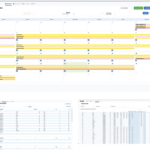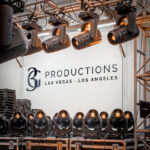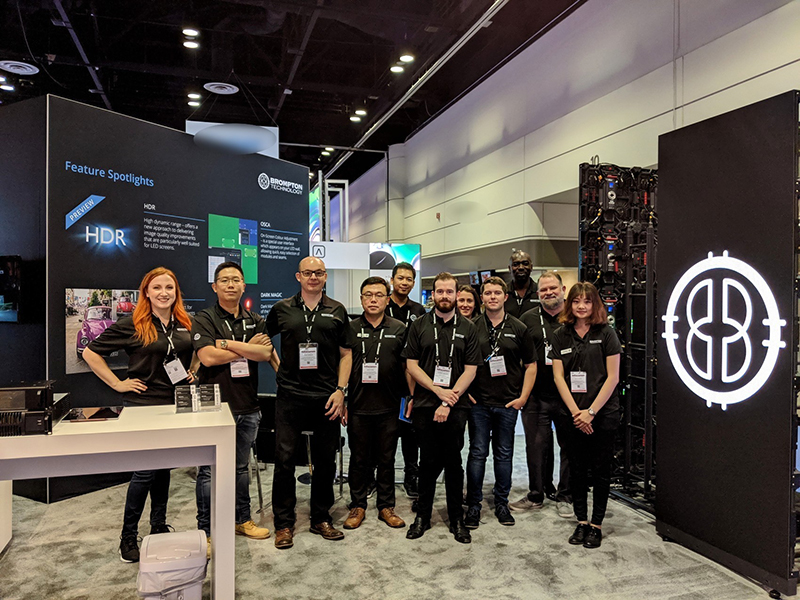
With the unveiling of their Dynamic Calibration System at LDI 2019, Brompton continues their evolutionary path of groundbreaking new technology. Capturing the attention and imagination of all the conventioneers attending, it proved to be one of the most-talked about technologies at the show. While unlocking the full potential of LEDs to achieve previously unthinkable levels of brightness and color saturation, Brompton has also brought a unique and revolutionary approach to maintaining uniformity. Dynamic Calibration is the enabling technology for HDR, which delivers a huge step forward in visual performance.
Brompton Technology has a much deeper history in the live entertainment industry than would seem apparent from their founding date of 2011. The impacts of the core team of minds that created and launched Dynamic Calibration and the Hydra system — an all-in-one industrial solution that incorporates all the measurement instruments and processing required for panel measurements to enable Dynamic Calibrations — have continuously been at the front of cutting-edge control systems since 1991.

Who They Are
“To understand how Brompton Technology came to be, we first have to talk about a different company called Carallon,” says managing director Richard Mead. “Brompton is part of a small group of companies under the umbrella of Carallon Group.
Carallon was established in 2004 and is still today based in West London. “We are a small company, engineering and manufacturing all our products here in the U.K.,” says Mead, “but we have international reach, with satellite offices in North America and Asia Pacific to best serve our global customer base.”
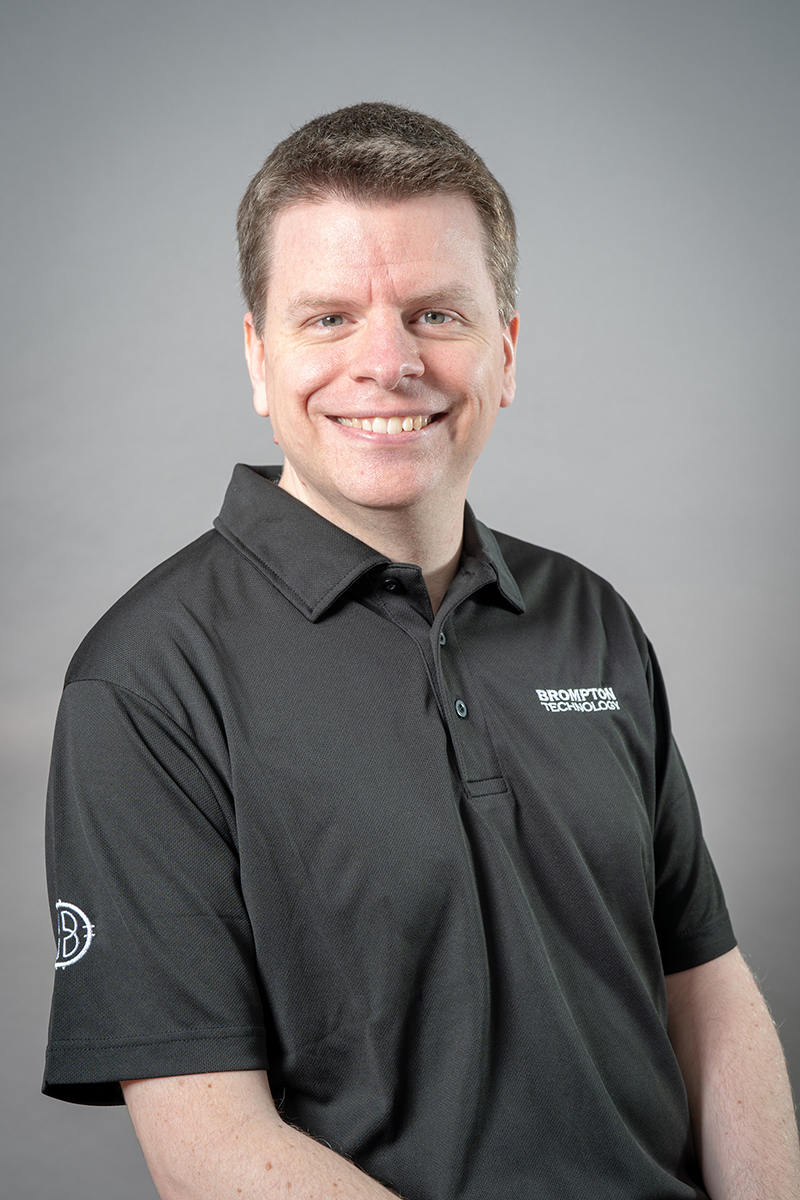
“Brompton’s chief technical officer, Chris Deighton, and I are two of the seven original founders of Carallon,” continues Mead. Prior to Carallon, the seven had worked at a little company known as Flying Pig Systems (FPS), the guys who developed the Wholehog lighting console. A brief marriage followed when Flying Pig merged with High End Systems (HES) in 1999. The seven partners quickly concluded they were not keen on the merger and decided it was time to move on to work on their own projects.
“We already knew we really liked working with one another and were very interested in getting back to concentrating on developing cool, interesting control products for the entertainment industry,” says Mead. To facilitate that, the partners started the company that came to be known as Carallon.
As a development team, they had a good reputation in the industry. “That’s about all we had on day one!” recalls Mead. Fortunately, the fledgling company was able to pick up contracting work from ETC and Martin Professional, who were among our first clients. This afforded the team “breathing capitol” to pursue their primary goal of developing their own ideas and projects, which sprung from their process of identifying niche markets that weren’t being served properly.
Separate companies and brand names were created to maintain separation between Carallon and the products it developed. The first of these, Pharos Architectural Controls, caters to the Architainment world, producing dynamic lighting controls that are used in a multitude of projects from theme parks to building facades, “which has grown into quite a successful company,” says Mead.
The team then identified video for live events as another under-served market. Mead and company saw products developed for the broadcast market, and even the consumer market, being repurposed to be used on live events and tours. “They really were not suitable for their purposes at all,” says Mead. With an eye specifically on that space, Carallon founded Brompton Technology in 2011.The first application they focused on was LED video processing.
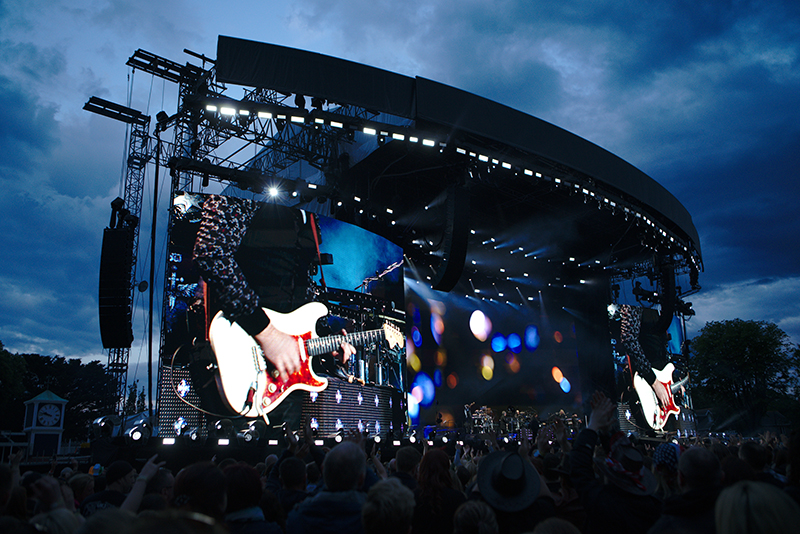
What They Do
The initial problem was obvious. One flat screen TV in the home consumer market has but one port to plug video signal into. The massive video walls in live performance events had hundreds, perhaps thousands of individual LED panels that needed video signal. So just how and where does the cable pathway deliver signal?
The Brompton team determined the answer is applying LED processing that will take video signal and do any necessary pre-processing to fit the particular screen dimensions, splitting it all up so the relevant bits of video go to the relevant LED panel and then making sure they all display the right bit of the image at the right moment.
The ultimate result is delivery of a perfectly synchronized image. This all has to occur practically instantaneously to avoid any latency issues between reality and the video image. At 60 frames a second, a couple of frames latency is negligible.
“Those are the kind of latency speeds that we work toward,” says Mead. The first product the company produced was the rack mount Tessera M2 LED processor. So successful was it, that LED screen processing became Brompton’s sole focus. “That particular product wound up taking all of our time. Its success, and that of our subsequent processors, says to us that it was the right area to concentrate on.” As a result, Brompton Technology has become the specialists in LED video processing.
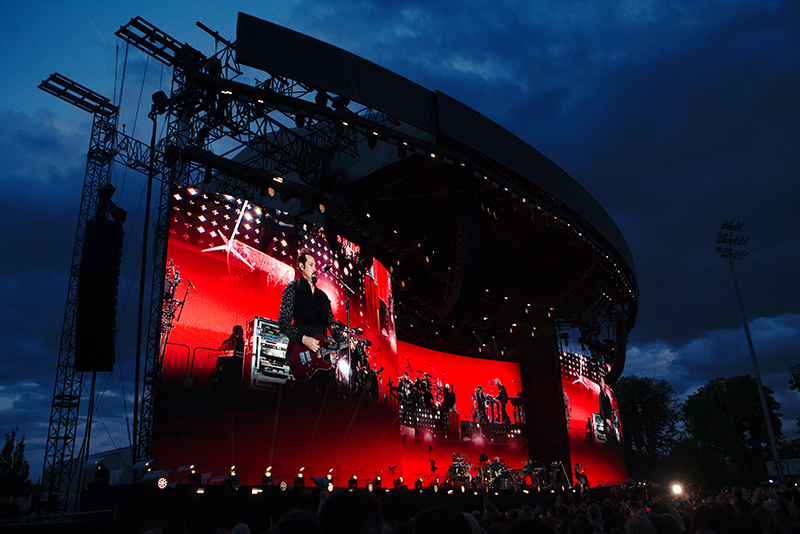
Landmark Gigs
Video Equipment Rentals (VER now under PRG) caught wind of the processor in development and committed to buying the entire first run, becoming Brompton’s first customer. “It was a very helpful boost right at the start,” says Mead, perhaps understating the point. It was also a very fast ramp-up for Brompton Technology. Within a matter of months of introduction, VER used the Tessera M2 LED processor on one of the world’s biggest shows, the 2013 Oscars. Mead remembers sleepless nights coupled with nerve-racking days, but “it was a very exciting time for all of us.”
The only glitch, if one could even call it that, was the rest of the industry somehow glommed onto the idea that Brompton was exclusive to VER. An extraordinary delivery vehicle, VER made use of the Tessera M2 on their LED panels on many high-profile AV events around the world. So close was the association that it took a few years to persuade the rest of the industry VER did not have exclusive rights to Brompton Technology.
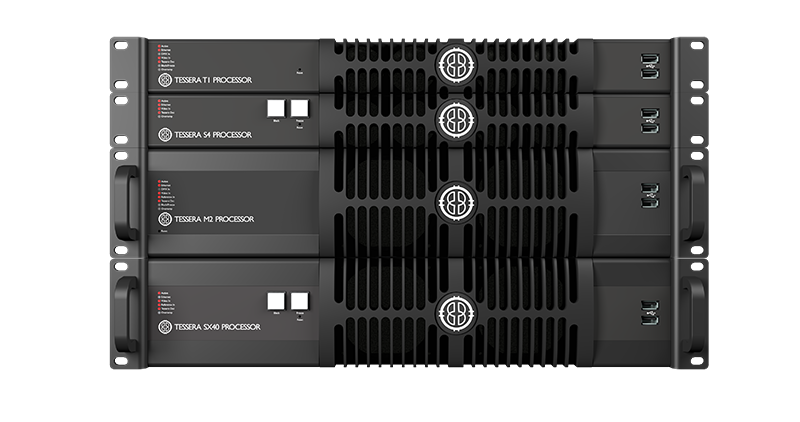
The first generation of receiver cards sent out with the Tessera M2 processor, by necessity, had to be custom built to fit on the back of the various brands of existing panels already in operation, all of which were different. “We were pulling our hair out a bit,” recalls Mead, as this was by no means a suitable working mode, which drove price up.
The R2, a next generation card, became the solution in 2013. “We packed everything into a form factor so small and compact it would fit on any panel manufactured,” says Deighton, who designed the R2 card. “Being able to produce just one card changed everything.”
In hindsight, Mead accepts the lag time due to the VER “exclusivity” misconception as fortunate happenstance. “It gave us time to mature our product, refine software and enhance what was already a great team.” By 2014 and 2015, rental sales were booming across the industry, and as of 2020, Brompton Technology products are in the hands of most of the world’s major production rental companies.
The evolution of the smaller receiver cards made Brompton realize it now had to turn equal attention upstream, to where the majority of LED panels are manufactured. A second face, if you will, that looks after the panel manufacturers in China. “What the manufacturers mainly care about is support in how to design our processing into their panels, and hit their manufacturing time schedules,” says Deighton.

An Office in Shenzhen
A very different set of skills were required to oversee this aspect of the business, and in 2016, Elijah Ebo was hired as senior manager to look after the panel manufactures. Ebo rapidly put together a team of “field application engineers”, all of whom speak Mandarin, enabling the company to communicate with the panel manufacturers in their native language, opening Brompton’s China office in Shenzhen in 2019.
In 2018 Brompton shipped their first 4K processor. “To be honest, we knew we were a little behind our competitors on delivery, but it was way more important to get the product right than rush to ship,” Mead notes. “We’ve always felt very strongly about that.”
It was patently clear that moving to 4K video was about more than just a new input format. HD requires four to six 1-gigabit Ethernet cables to carry the amount of data needed for an HD video wall. Easy math points out that 4K (four times as many pixels) need 16 to 24 separate 1 gigabit cables to carry that information from processor to wall. Such an unwieldy amount makes cable management a pain on tour.
Brompton developed the Tessera XD 10G Data Distribution unit to make data flow more efficient. It outputs 10 gigs Ethernet from their Tessera 4K processors. A system of “break-out” data boxes on the LED panel then send 1 gig EtherNet out to the panels. The system can carry copper or fiber.
Mead points to this “whole-istic” approach as a prime example of one of the several ways “we always believe we did the right thing even though the product came out late.” The absolutely spectacular market response validated their decisions with a four-year, year on year run of 62 percent growth. Even The Times in London and the U.K. national press took notice, reporting on the company in their financial section — “an uncommon posting we are quite proud of,” smiles Mead.
Having brought a range of processors to market, including the incredibly successful 4K Tessera SX40, Deighton and team, as per their modus operandi, delved into the next “Big Thing” Brompton should be doing. HDR was just coming on the scene, pushed mainly by the television.
At Brompton they saw a lot of potential in HDR. With the advantages LED can deliver — wider color gamut, better color saturation, greater bit depth ability, and the fact that control over every individual LED in a panel is possible — the team at Brompton knew they could deliver HDR in a more meaningful way.
However, the major obstacle to harnessing all the potential of HDR for LED screens is calibration. The “legacy” method of calibration has been done by the manufacturer at the end of the assembly line in order to achieve uniformity. “Consistency” so to speak, is traditionally accomplished by dropping the brightness of the surrounding LEDs to match the lowest rez LED, potentially compromising the panel. And, once calibrated, this is set for all content over the entire life of the panel.
“The whole point of HDR is to increase the color gamut,” points out Deighton. “We need calibration upwards not in the other direction, and no such system existed to accomplish this.” The Brompton team designed Dynamic Calibration, a brand new calibration method to replace the old legacy systems, which unlocks the full potential of the LEDs to achieve previously unthinkable levels of brightness and color saturation and still guaranteeing uniformity.
The Hydra measurement system looks at an LED panel and quickly ascertains how each LED is able to perform, stores that data and does it very fast. With Hydra what used to take minutes now takes seconds.
LED panels measured by Hydra can make use of Dynamic Calibration, which delivers the full range of brightness and color gamut in each individual LED. The R&D leading up to the release has been in process for over two years. “We feel this is the next big step in terms of how to drive forward LED image quality,” says Deighton.
Current and Future Opportunities
The next fastest growing segment the Brompton team sees is the move to use LED as a replacement for the old “Green Screen” backdrop in film and television. LED screens were first seen on big budget Hollywood films only a few years ago. “Now their use is cropping up everywhere,” says Mead. “Film guys are really fussy. With our processing technology, they have all the handles and adjustments they need to tweak to their satisfaction.”
Rob Fowler is the senior business development manager at Brompton. His job is to build relationships with rental companies and manage the support teams. He was asked to come on board in 2013 and was actually the first employee to be hired at Brompton Technology.
“Notwithstanding the quality of our product, what we are most proud of is the quality of our service,” says Fowler. “We understand this is a 24/7 environment and that the people on the other end of the phone need answers immediately. Industry experience is certainly something we hold in high value.”
After college and a five-year stint with Vari-Lite, Fowler came to work with the guys at FPS in 1998, where he provided Wholehog lighting control support. He was part of the move to HES, where “I was led astray into video while working on development of the Catalyst System,” he laughs. Employment with Barco afterwards “put lighting dimly in the rear view mirror, and I became a ‘vidiot,’ as we’re affectionately known, full-time.” With the formation of Carallon, he was asked to rejoin the gang, and “here I am, 20 years into my career. I started in lighting and have ended up in video, but working with the same guys — a perfect circle, you might say.”
He has worked steadily at expanding Brompton’s original customer base, which includes some of the world’s biggest rental and staging houses. “That’s been our mainstay,” says Fowler, but increasingly, “we are supporting medium size rental houses that are looking for a product that will give them a solid result and reliability. It is leading us to more customers while at the same time establishing Brompton Technology as the standard in the market.”
Looking at the future, Fowler would like to continue the tremendous growth they have had in the U.S., Australia, Europe and elsewhere in the world. “There are a few markets we have not had the time and resources to reach geographically, but the word is spreading, which is great. Our goal is to continue that type of growth and there are a lot of new, exciting markets, such as film and broadcast, for us to look at.”
Hands-on experience from being in the field, delivering an easily accessible and superior product online “is what drives us,” says Deighton. “We create products as we would like to receive them.”
Company Snapshot
Brompton Technology Ltd
U.K. Headquarters:
- International House, 7 High Street
- Ealing Broadway, London, W5 5DB
China Location:
- 902 Yue Mei Te Building
- 1 Gao Xin South Seven Road
- High-Tech Industrial Park, Yuehai Street
- Nanshan District, Shenzhen
More Info: www.bromptontech.com
